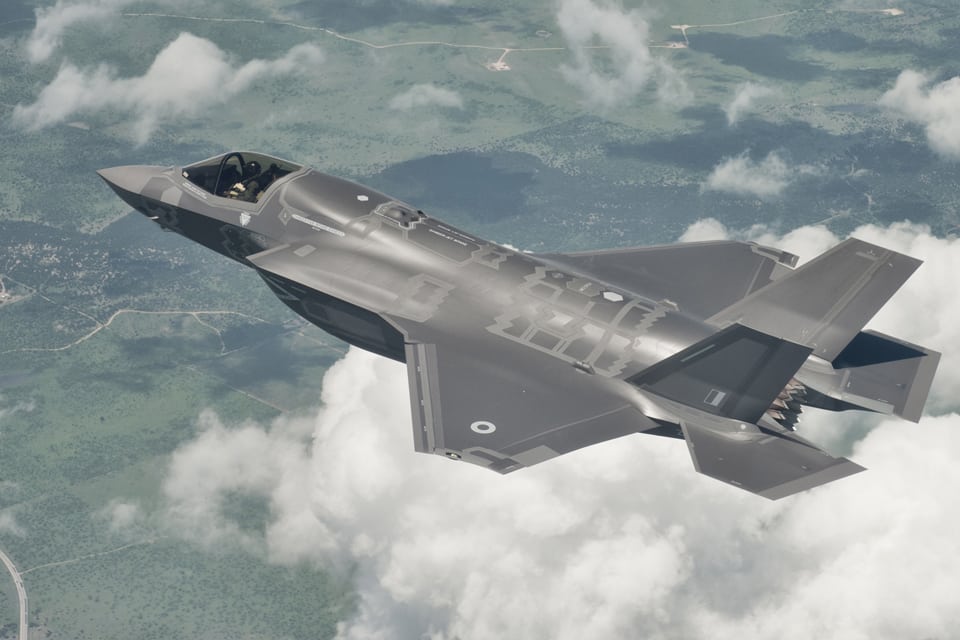
Photo: Lockheed Martin
After years of criticism from analysts, journalists and government officials over F-35 costs and delays, the world’s most advanced fighter jet is entering service around the world. Lockheed Martin Executive Vice President (EVP) and Chief Financial Officer (CFO) Bruce Tanner gave an update on the F-35’s program status[ak1] , as well as several other aircraft programs and what he sees as a major issue for today’s aerospace and defense workforce, during last week’s Cowen Group’s Annual Aerospace/Defense & Industrials conference.
In 2016, the U.S. Air Force declared Initial Operating Capability (IOC) for the F-35A, and the fleet recently surpassed 80,000 flight hours. Two hundred production F-35s have been delivered, and the manufacturer has a backlog for 173 production variants among the U.S. and its international military partners.
But the fifth-generation fighter did not achieve IOC without issues. Outside of the highly publicized scrutiny from the new U.S. presidential administration over the multi-billion dollar program, issues associated with the aircraft’s avionics became public last year. In September, USAF temporarily pulled 13 F-35As from flight operations due to peeling and crumbling insulation inside of its avionics cooling lines.
Earlier in 2016, the program executive officer for the F-35, USAF Lt. Gen. Christopher Bogdan, outlined issues discovered in flight testing with the Block 3I and 3F software upgrades in a briefing before the U.S. House Armed Services Committee. Last week though, Tanner looked to quell public criticism of the jet’s software, which features 8 million lines.
“I think we’re seeing some good things in terms of stability of the software on the aircraft,” said Tanner. “I don’t think it’s as much of an issue as the press makes it out to be. I think we’ll resolve that well, we’ll be ready in time to support the Navy’s requirement.”
The company further addressed F-35 avionics issues in its recent 10-K filing with the U.S Securities and Exchange Commission. It noted that debris discovered in an F-35A’s fuel tank during an inspection was determined to be insulation shed from a cooling tubing for the electronics and avionics that is located within the wing. Engineers found during inspections performed last year that the tube was wrapped with “non-compliant insulation material,” the filing said.
The issue affected 57 aircraft, the company said, 15 of which had been delivered and 42 that were in production. Modification work completed in the fourth quarter corrected the issue on all those aircraft and flight operations with the 15 delivered ones have resumed, the filing said.
Tanner also gave an update on flight testing of the F-35B Short Takeoff and Landing (STOL) variant, saying that it recently surpassed 16,000 flight hours, twice the number for the expected life span of the F-35. Lockheed Martin expects to complete the majority of system development and demonstration work under current development contracts this year, he said.
However, the public scrutiny associated of the three F-35 variants is not over, as U.S. Defense Secretary James Mattis recently ordered a review of the program. That review is to consider a fourth-generation fighter alternative to the F-35C carrier variant for the U.S. Navy. The company had been tasked originally with achieving IOC for that variant by 2018.
Tanner discussed other Lockheed Martin’s major aircraft programs, including F-16 modification efforts, future potential usage of the C-130 Super Hercules and the ninth production version of the Super Hercules, the commercial freighter LM-100J, which is scheduled to make its first flight later this spring. Lockheed Martin rolled out its first LM-100J Feb . 9 and its Marietta, Georgia facility.
On the F-16, Lockheed Martin expects to deliver its last production F-16 by the third quarter. With more than 4,600 F-16s in service worldwide, the OEM expects to see demand for modification efforts persist. The most recent example is from South Korea with a $1.2 billion order to upgrade 134 F-16s.
Tanner said he also believes that the C-130 will to see strong demand both domestically and internationally.
“There’s still a large demand on the international side for the C-130,” he said. “I don’t think we’re going to see large individual buys by any one country, but we still see pockets of 1s, 2s, growing the existing fleet from a number of different users that have been utilizing the C-130 recently.”
One potential future user could be the U.S. Forest Service, as Tanner noted that the agency’s firefighting fleet is “long in the tooth,” and the C-130 could see some demand there to help address wildfires that have plagued western U.S. states in recent years.
Tanner also offered an interesting insight on the need for Lockheed Martin and other major players in the U.S. aerospace and defense industry to start focusing more on future workforce that is going to be needed to support the complexity of current and future aerospace and defense technologies.
“We went through a period of time after the Reagan build up where there just frankly wasn’t hiring in this industry, so we have a valley between people who look like me – this is my 35th year in this business – and people who are 25-35,” Tanner said. “We have kind of a bi-modal population, and there’s not a whole lot of people in the prime 45 age group who would be the next leader. We’re going to have a lot of people retiring that are going to need to be backed by people who actually have experience in this business. That’s something I am very focused on.”